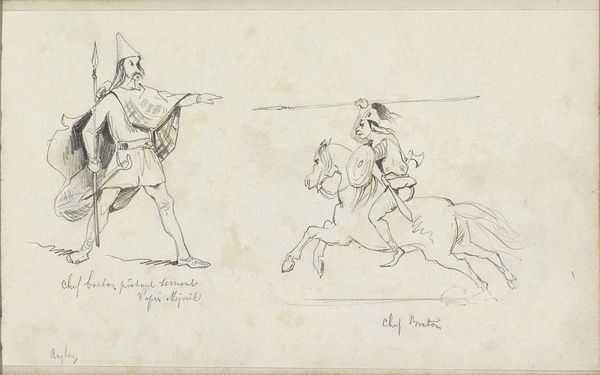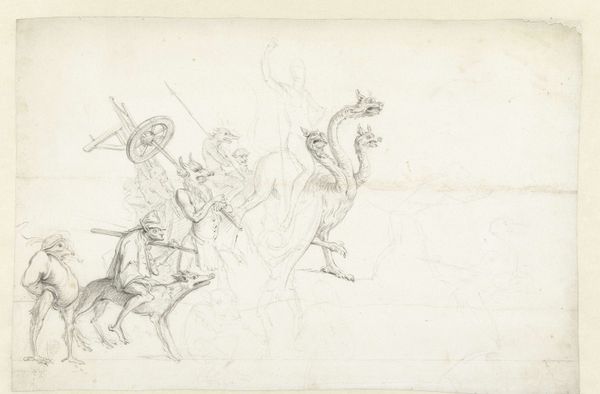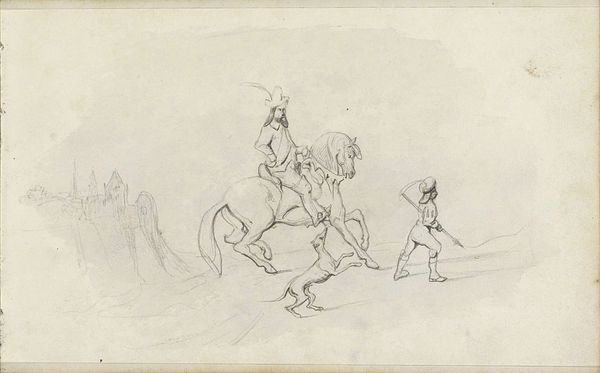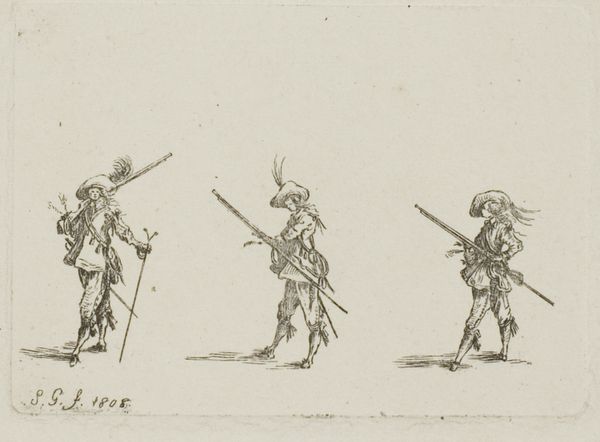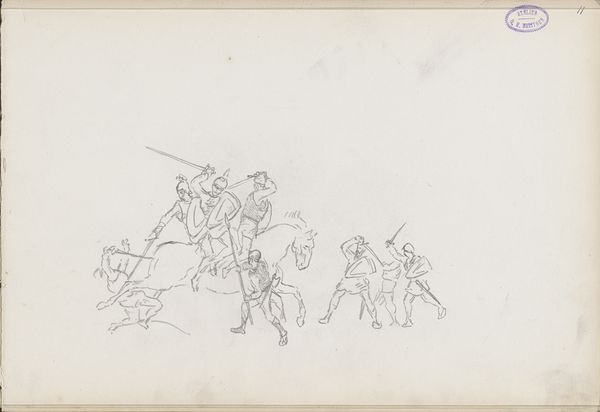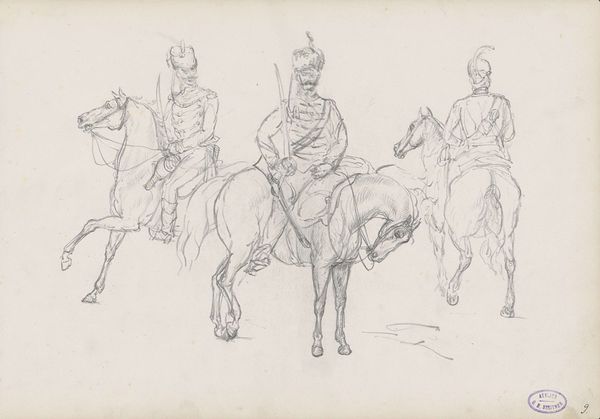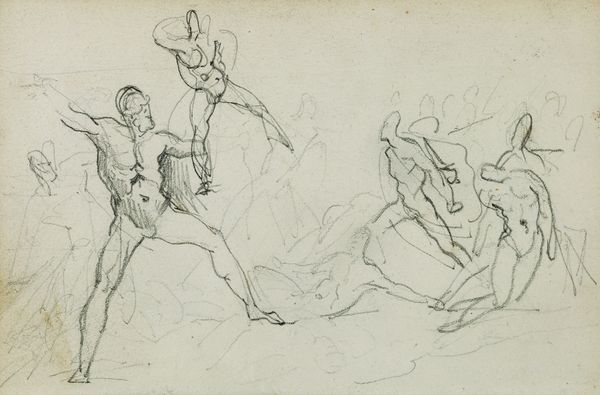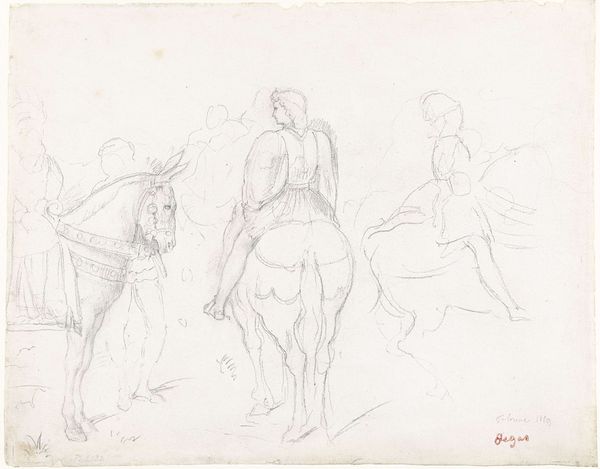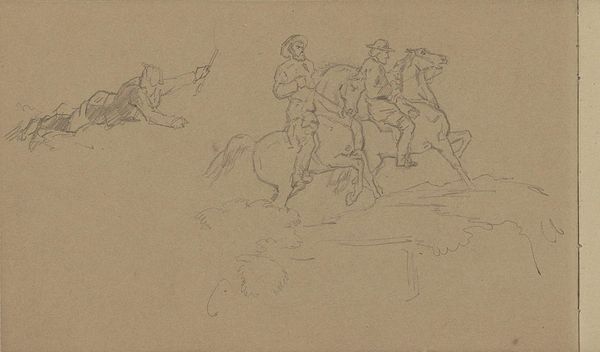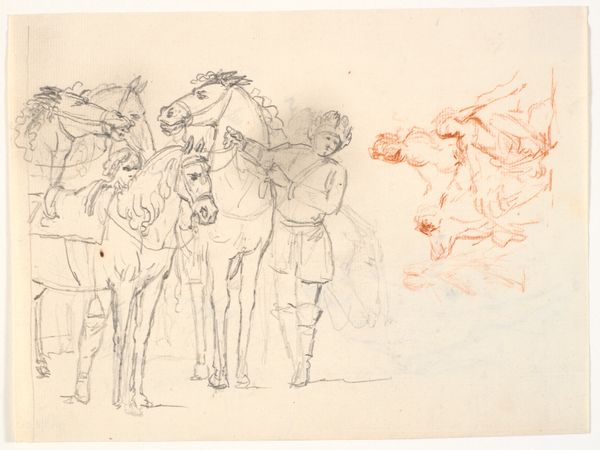
drawing, pencil
#
drawing
#
pencil sketch
#
landscape
#
figuration
#
romanticism
#
pencil
Copyright: Rijks Museum: Open Domain
Curator: This pencil drawing, currently held at the Rijksmuseum, is entitled "Angelsaksische ridders, waarvan twee te paard," or "Anglo-Saxon Knights, two of whom are on horseback," created by Johannes Tavenraat between 1843 and 1844. Editor: The first impression is that this feels… unfinished? The light pencil work almost floats on the page, as if caught between dream and reality. Curator: I agree, the lightness creates an ethereal quality, fitting for the Romantic period. What fascinates me are the knights' helmets. One figure has a winged helmet – perhaps invoking classical, mythical imagery of Mercury or Hermes, associating swiftness and divine communication. Editor: I'm drawn to think about how the portrayal of Anglo-Saxon knights, particularly during this period of growing nationalism in Europe, can function to construct ideas about lineage and legitimate power. Were the knights symbols of Dutch identity, even through this British lens? Curator: It’s interesting you say that. During the 19th century, history was being selectively reimagined across Europe, and frequently re-contextualized as national allegory. By appropriating elements of Anglo-Saxon, Norman, or medieval heraldry, the drawing could imply the artist's connection to what he considered historical glory. Editor: Look closely—these are preliminary sketches; it gives us a raw, immediate view into the artist's thought process as he conceptualized an imagined medieval past. I'm most intrigued by the contrast between the very defined figure with elaborate horns or wings and the other knights, still fading out of view. What is it about him that warranted this emphasis? Curator: Possibly because he is on foot; the hierarchy is unclear, but his distinctive helmet surely designates a status of nobility within the company. Editor: Thinking about those markers of power—their armor, weapons, the horses they ride—art always reveals these cultural nuances of privilege, these deliberate constructions. This piece captures how power dynamics get solidified through representation, often harking back to what is understood as legitimate origins of that authority. Curator: Agreed. Tavenraat’s decision to represent knights, not kings or bishops, positions these soldiers as emblems. Symbols and artifacts communicate narratives that can persist for centuries. It makes me consider the cultural life of visual imagery, the life beyond the artist. Editor: I see the emotional depth here, the cultural work the art performs, its complicated dialogue with historical imagination. It’s much more than just lines on paper.
Comments
No comments
Be the first to comment and join the conversation on the ultimate creative platform.
